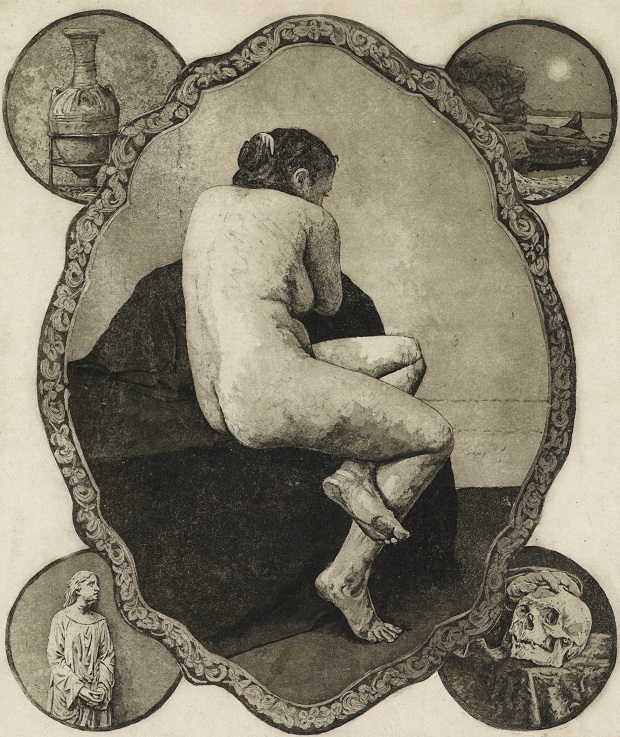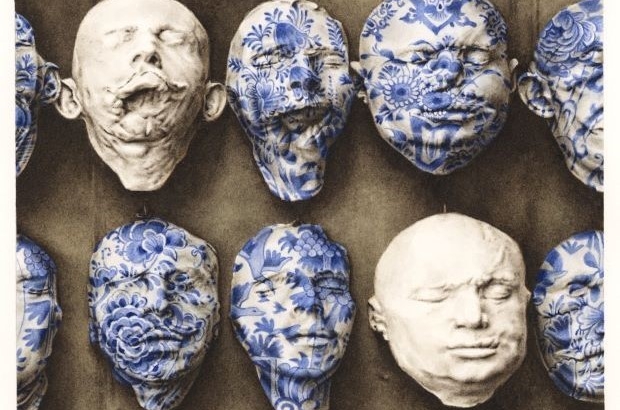- Daily & Weekly newsletters
- Buy & download The Bulletin
- Comment on our articles
Brussels artist Milan Jespers commemorates human life in all its pain and glory in first solo show
The starting point for Milan Jespers’ compelling series of paintings and engravings is a personal collection of period photographs.
Dating from the end of the 19th and the beginning of the 20th century, they fill display cabinets at his first solo show, Cenotaphs, at Huberty & Breyne gallery.

Revealing a fascination with history and the rituals around death, this cabinet of curiosities is centred on predominantly formal poses by people of various classes and ethnicities. This was the dawn of the photography age and the contrast between old customs and new technology is illuminating.
Fast forward to Jespers’ modern-day sequence of 27 new works and many of these figures are transported into the present day, albeit in images loaded with history and symbolism. The artist’s technique of meticulously layering watercolour and washes eerily recreates these archive images; exercises in realism set against sepia backgrounds that further resonate with the inspiration material.

Beyond the intricate brushwork, the viewer’s eye is drawn to the proud stance of these figures, despite or because of the physically afflictions that they often bear. The exquisitely-painted textiles adorning the portraits also injects a contemporary aesthetic.
The application of finely painted textiles, from their intense colours to luxurious folds, are intended to sublimate these darker moments and situations. “You can find beauty in things that are difficult,” says Jespers, who honed his craft as a child painting miniature fantasy figurines.
In Delftware medical casts (main image), Jespers subverts a famously gruesome photograph of wounded world war one soldiers with the prosthetic masks that were made to hide their facial injuries. He alters the image by painting the striking blue and white pattern of the Dutch pottery Delft onto some of the shell-like masks. As well as introducing an unlikely point of beauty, it evokes the Chinese porcelain treasures that symbolised colonial plundering.

This intriguing discrepancy serves as a recuring theme in the work of Jespers, who graduated from St Luc’s comic strip section in 2015. The four figures in Baigneurs de Rance represent American GIs relaxing in a jungle setting; its title references the red limestone marble once mined in the Hainaut town of Rance and famously used in the Château of Versailles. The faded monochrome background of the larger-scale work is offset by the red and white pattern of these almost reptilian figures. Paper collage was employed in the outline of their heads to further focus attention on the strange creatures’ interaction with nature.

Engraving also plays a significant role in his oeuvre. Jespers points out Noli me tangere (touch me not), which recreates the biblical scene with Mary Magdalene. But the roles are reversed so that it’s the woman who asks not to be touched rather than Christ, thereby evoking the current thorny issue of consent in sexual relations.

One of Jespers’ motivations for delving into history is to add colour to the past to give it another dimension. “My universe is also the result of my obsessions with the body, death and the ritualisations around it such as masks and casts.” His exploration of the rites around death and grief focus on the mystery, pain and glory that they encapsulate.
This constant play with contrasts represents a series of deliberate clashes that are designed to shock and provoke a reaction. They question our relation today with the past – providing a visual and singular recontextualising that always honours human life.
Cenotaphs
Until 17 June
Huberty & Breyne
Place du Châtelain 33
Ixelles



















